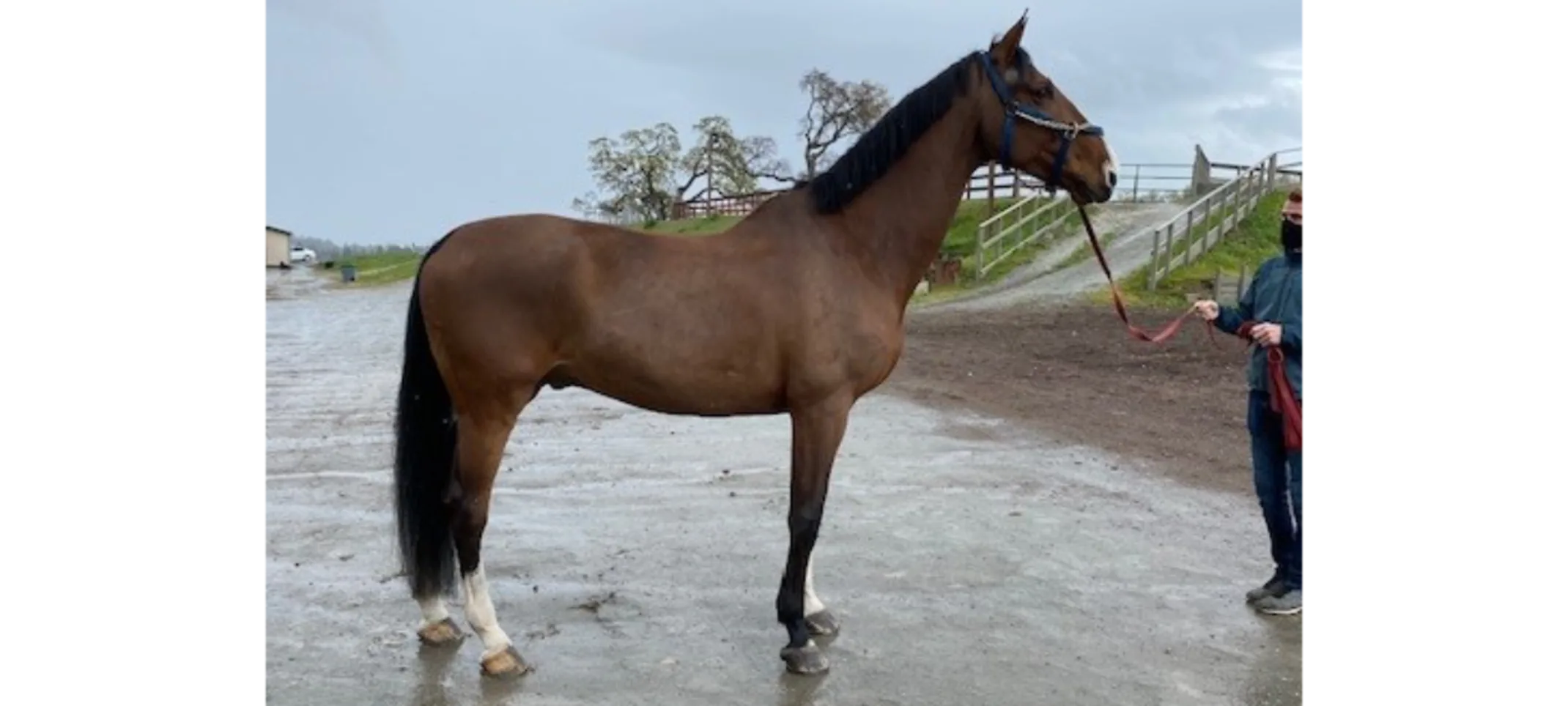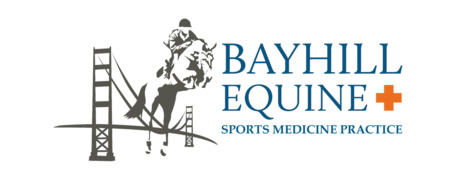Bayhill Equine
Lameness Exams

What is Lameness?
The American Association of Equine Practitioners defines lameness as "an alteration of the horse's gait." Simply put, lameness is any condition that the horse may have that causes it to be unable to travel on all four feet in a consistent and sound manner.
Stress, injury or degenerative change can take its toll on any horse and result in lameness.
When lameness occurs, prompt diagnosis and treatment can save you time, money and frustration. The veterinarians at Bayhill are highly trained at recognizing lameness in horses and utilizing state-of-the-art diagnostic procedures and treatments. Our practice is equipped with many tools to aid us in the diagnosis and treatment of your horse.
Generally speaking, there are three main reasons that your horse will look "lame":
1. Pain - Pain will cause your horse to not want to put weight on the affected leg or area- thus making it travel differently from one leg to another- this is what makes the horse look lame. This can be due to either issue involving the soft tissue (ex tendonitis, bursitis, infection, joint capsular injury, etc), or the bone (ex fracture, osteomyelitis, etc)
2. Mechanical limitation - ex. fibrosis of soft tissues or fusion of joints
3. Neurologic issue - conditions that affect the neurologic system and limit the ability of the horses to have full control over their limbs (ex wobblers syndrome, Equine protozoal myeloencephalopathy)
To effectively treat the lameness it is important to correctly diagnose the cause. If you think that your horse is lame and would like to book a consult, contact our clinic for more information.
How do I know if my horse is lame?
We all know our own horse better than anyone else. Detection of lameness usually starts with the owner noticing that their horse is not moving in the same manner as usual, or that their horse is less willing to do certain tasks that used to be no issue (ex. transitions from walk to trot or trot to canter.) It is this change that usually makes an owner aware that something is wrong.
While some lameness is quite evident- such as your horse holding its affected leg in the air as can be the case with a fracture or foot abscess, there are many conditions that can be quite subtle. In such cases, leading or riding your horse can be very helpful in determining if your horse is lame or not. It is often helpful to have someone else perform this task so that you can evaluate the lameness from the ground. Comparing this movement to normal is often quite the best place to start
If you think that your horse is lame, there are observations that you can make yourself to help determine where the lameness may be:
1. Look at how the horse is standing when at rest. Is he/she routinely pointing one leg ahead of the other? Is he/she reluctant to bear weight on a certain leg? Does he/she have any noticeable cuts or swelling?
2. Take your horse out on the lead and listen to the cadence of the hoof beats. The rhythm of the footfall should be relatively even 1...2...3...4. If your horse is lame, the intensity of the footfall and the time between the footfall may change, such as 1...2.3...4. You can also see this difference visually- Watch how your horse moves at a walk and trot- is he/she bearing weight on one leg longer or less time than the other? Just like you, horses will avoid putting weight on a sore limb, resulting in a "limp" wherein they bear weight on the affected limb for less time than the normal limb.
3. If the lameness is subtle, and you are still having trouble figuring out which limb is affected, sometimes the best option is to ride your horse to feel the strides. Does your horse feel short strides on one side as compared to the other? front compared to back?
All these observations will help to determine which leg is affected and will help both you and the veterinarian decide on the appropriate therapy. If you believe your horse is lame and want to discuss your options, please feel free to contact us for a diagnostic work-up
What is involved in a lameness exam?
There are varying components to every lameness workup depending on the purpose of the exam. However, all examinations should include the following components:
1. History. If it is not known by the veterinarian, a relevant medical history should be obtained. This is essential, especially if this is not the first examination for the same lameness.
2. Observation of horse at rest. This will indicate if there are any areas of swelling or inflammation, as well as a determination of whether the horse is favoring one leg over the other.
3. Palpation. It is essential that the horse be palpated in the affected areas for assessment of heat, pain, swelling, and abnormalities.
4. Evaluation of the horse in motion. The horse should be evaluated in motion to detect whether the horse is short-striding or favoring any given leg. It is also possible to determine whether there is any paddling or winging of legs, whether there is even hoof placement or head bobbing.
5. Flexion testing. During a standing limb examination, the veterinarian will flex the joints to determine if there is any pain associated with flexion.
Once this has been completed, further diagnostic testing (such as x-ray or ultrasound examination) of the areas of interest is likely to be performed.
